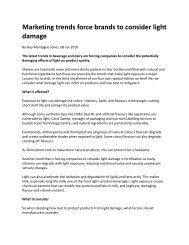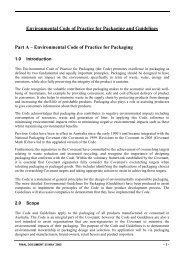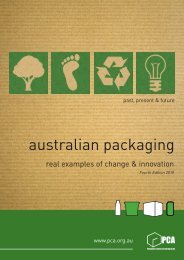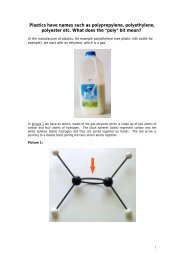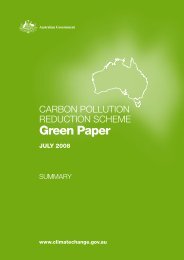Food labelling guide - the Packaging Council of Australia
Food labelling guide - the Packaging Council of Australia
Food labelling guide - the Packaging Council of Australia
You also want an ePaper? Increase the reach of your titles
YUMPU automatically turns print PDFs into web optimized ePapers that Google loves.
What about qualifying claims, fine print and disclaimers<br />
When making representations about <strong>the</strong> prominence <strong>of</strong> particular ingredients in food or<br />
beverage products, businesses should provide sufficient and appropriate information to<br />
enable consumers to make a reasonable and informed judgment about whe<strong>the</strong>r to purchase<br />
<strong>the</strong> product. Businesses may, for example, need to include additional information on a label<br />
to qualify <strong>the</strong> emphasis given to a particular ingredient, if this emphasis is potentially false,<br />
misleading or deceptive.<br />
Fine-print qualifications and disclaimers (e.g. <strong>the</strong> use <strong>of</strong> an asterisk or ‘Conditions apply’<br />
statement leading to a fine-print disclaimer) are <strong>of</strong>ten used in food and beverage <strong>labelling</strong>.<br />
Businesses may sometimes try using <strong>the</strong>m to promote a selling point, while putting <strong>the</strong><br />
conditions in fine print in an attempt to avoid any misrepresentation.<br />
However, this may not be enough to avoid breaching <strong>the</strong> Trade Practices Act. The main selling<br />
point used for a product may create such a strong impression on a consumer that it cannot be<br />
qualified or corrected by a disclaimer or qualification found elsewhere on <strong>the</strong> label, packaging<br />
or advertisement. If an advertisement conveys an overall impression likely to be misleading<br />
and deceptive, it will breach <strong>the</strong> Act even though aspects or parts <strong>of</strong> <strong>the</strong> advertisement can be<br />
found that are inconsistent with that impression.<br />
A disclaimer cannot be used to correct a misrepresentation. In effect, <strong>the</strong> Act says that<br />
businesses must not make erroneous representations about <strong>the</strong>ir products or services.<br />
Businesses cannot <strong>the</strong>refore make any type <strong>of</strong> potentially misleading representation and<br />
expect to qualify that with a disclaimer or in <strong>the</strong> fine print. Ultimately a representation will be<br />
judged on <strong>the</strong> overall impression that is created.<br />
Where a qualification is not prominent or clear enough, <strong>the</strong> advertisement can still be<br />
misleading, depending on its overall impression on its audience. The advertisement must<br />
clearly direct attention to <strong>the</strong> most significant terms and conditions, so that consumers can<br />
readily have <strong>the</strong> information <strong>the</strong>y need to make informed purchasing decisions.<br />
12 <strong>Food</strong> <strong>labelling</strong> <strong>guide</strong>




